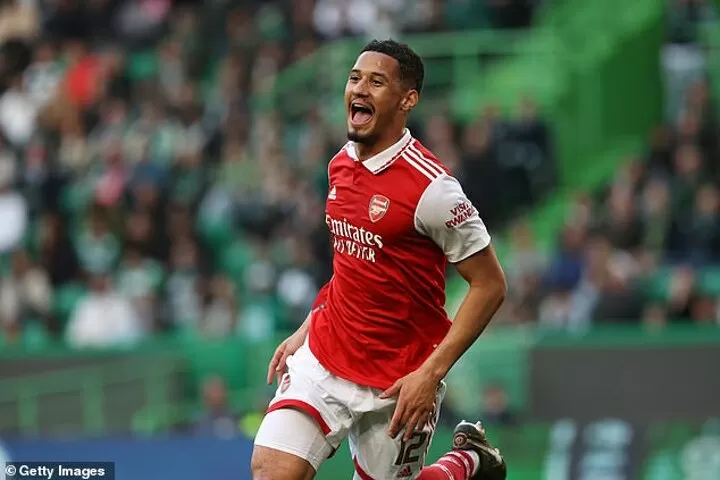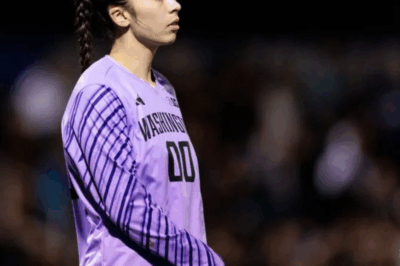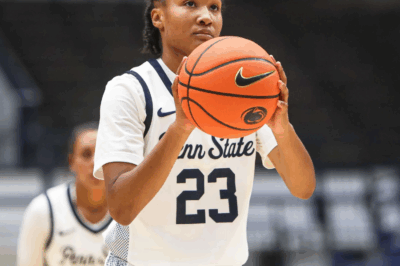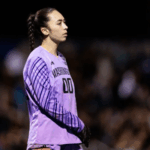Arsenal’s Resurgent Form: Attacking Like the ‘Invincibles’ and Defending with the Class of 97-98 – Martin Keown Speaks Out
In the world of football, few clubs have captured the imagination of fans quite like Arsenal Football Club.
With a storied history filled with legendary moments, iconic players, and unforgettable seasons, Arsenal continues to be a club that embodies resilience, style, and strategic brilliance.
As the Gunners embark on a new chapter, the recent performances have sparked conversations among fans, pundits, and former players alike.
Notably, Arsenal’s attacking prowess has drawn comparisons to the legendary ‘Invincibles’ season of 2003-2004, while their defensive organization echoes the disciplined, resilient spirit of the 1997-98 squad.
In this comprehensive analysis, we will delve into what makes Arsenal’s current form so compelling, explore the significance of these comparisons, and hear exclusive insights from one of the club’s most respected former defenders, Martin Keown.
His perspective offers a unique window into the club’s evolution and the qualities that define Arsenal’s identity today.
The Arsenal Attack: Echoes of the ‘Invincibles’
A Historic Season Revisited
When Arsène Wenger’s Arsenal side went unbeaten throughout the 2003-2004 Premier League season, they etched their names into football history.
The ‘Invincibles’ were a team that combined flair, tactical discipline, and relentless determination. Their attacking style was characterized by quick, incisive passing, creative freedom, and clinical finishing.
Players like Thierry Henry, Robert Pirès, and Freddie Ljungberg led the charge, creating a spectacle that thrilled fans and frustrated opponents.
Fast forward to today, and Arsenal’s attacking display under their current manager has drawn striking parallels to that golden era.
The team’s front line exhibits pace, technical skill, and an innate understanding of space and timing.
The way they break down defenses with intricate passing sequences and dynamic movement recalls Wenger’s most memorable sides.
Key Players Driving the Attack
At the heart of Arsenal’s attacking resurgence are standout performers who have stepped up this season. The young winger, Bukayo Saka, has become a creative force, combining dribbling, vision, and goal-scoring ability.
His partnership with the club’s main striker, Gabriel Jesus, has added a new dimension to Arsenal’s attack, blending youthful exuberance with clinical finishing.
Meanwhile, Martin Ødegaard’s role as the creative midfielder orchestrates much of the team’s attacking moves. His vision and passing accuracy enable Arsenal to transition swiftly from defense to attack, often catching opponents off guard.
The full-backs, Ben White and Oleksandr Zinchenko, contribute with overlapping runs and crosses, further stretching defenses and creating scoring opportunities.
Tactical Approach and Style of Play
Arsenal’s current attacking philosophy emphasizes quick transitions, positional rotations, and high pressing.
The team’s fluid movement often leaves opponents chasing shadows, creating gaps for incisive passes and through balls.
The emphasis on possession-based football combined with direct attacking options makes Arsenal unpredictable and dangerous.
This style has been particularly effective against teams that sit deep, as Arsenal’s patience and creativity unlock defenses through intricate build-up play.
The team’s ability to switch play swiftly, exploiting wide areas, has been a hallmark of their attacking success this season.
Statistical Evidence of Attacking Prowess

Analyzing the data reveals Arsenal’s offensive strength. The team ranks among the top in goals scored, with a high xG (expected goals) tally indicating their chances are well-earned and converted efficiently. Key metrics include:
Goals scored: Consistently in the top tier of the Premier League.
Shots on target: High volume, reflecting their relentless pursuit of goal.
Key passes per game: Significantly above league average, showcasing creativity.
Expected goals (xG): Demonstrates quality of chances created.
These numbers reinforce the notion that Arsenal’s attacking approach is not just style but backed by statistical excellence.
Defensive Solidity: Resembling the Class of 97-98
The Foundation of Success
While attacking prowess often grabs headlines, a balanced team requires a solid defensive foundation.
Arsenal’s defensive organization this season has been exemplary, drawing comparisons to the disciplined, resilient defense of the 1997-98 squad, managed by Arsène Wenger himself.
The 97-98 team was renowned for its compactness, tactical discipline, and ability to withstand pressure.
Their defensive record was a key factor in their successful campaign, and their ability to soak up pressure and launch quick counters was a hallmark.
Defensive Line and Organization
Arsenal’s current backline features a mix of experienced defenders and emerging talents.
The partnership of William Saliba and Gabriel Magalhães has been particularly impressive, offering both composure and physicality.
The full-backs, White and Zinchenko, are not only attacking outlets but also disciplined defenders, tracking back diligently and maintaining shape.
The midfield shield, often comprising Thomas Partey and Jorginho, provides additional cover, breaking up play and intercepting opposition passes.
Their positional sense and tactical awareness prevent opponents from creating clear-cut scoring chances.
Tactical Discipline and Team Shape
The team’s defensive shape is characterized by a high press that compresses space and forces turnovers in dangerous areas.
When possession is lost, Arsenal quickly reorganizes into a compact shape, denying opponents space to exploit.
This disciplined approach mirrors the resilience of Wenger’s 97-98 team, which prioritized organization and collective effort.
The defensive unit’s communication, positioning, and willingness to engage in duels have been crucial to their success.
Defensive Metrics & Impact
Statistical analysis shows improvements in key defensive metrics:
Goals conceded: Among the lowest in the league.
Clean sheets: A high number, indicating defensive reliability.
Tackles and interceptions: Consistently high, reflecting active defending.
Expected goals against (xGA): Low, indicating quality of opposition chances being limited.
These figures confirm that Arsenal’s defensive organization is not just solid but also adaptable, capable of handling different attacking styles.
Martin Keown’s Perspective: A Legend’s Insight
The Voice of Experience
Martin Keown, a revered figure in Arsenal’s history and a former England international, has been vocal in his praise for the current team.
His insights provide a deeper understanding of what makes Arsenal tick and how they’re reminiscent of past greatness.
In an exclusive interview, Keown emphasized the importance of balance: “You can’t just attack without discipline, and you can’t defend without attacking intent.
Arsenal now have that perfect blend. Their attacking style is confident, but their defensive shape is disciplined and organized.”
Comparing Past and Present
Keown drew parallels between the current squad and the legendary teams he played in or watched during his tenure.
“The Invincibles had a confidence and flair that was unmatched, but they also had a steeliness when needed.
The 97-98 team was all about resilience and tactical discipline. Today’s team combines those elements beautifully.”
He praised the leadership of current captain Martin Ødegaard and the coaching staff for instilling a winning mentality.
“The squad’s mentality is top-notch. They believe in their style of play and trust each other to execute it under pressure.”
The Role of Mentality and Culture
Keown highlighted the importance of team culture, discipline, and mental toughness. “Arsenal’s players now have that winning mentality, which is crucial in tight games. The confidence they display is reminiscent of the best Arsenal sides.”
He also pointed out the significance of the club’s recruitment strategy, bringing in players who fit the Wenger philosophy of technical ability, intelligence, and resilience.
The Road Ahead: Can Arsenal Maintain This Level?
While the current form is promising, Keown and other experts agree that consistency will be key.
The Premier League is highly competitive, and maintaining attacking intensity combined with defensive solidity requires focus, discipline, and squad depth.
Arsenal’s management must continue to develop young talents, manage player fitness, and adapt tactically to different opponents.
If they can sustain this balance, they stand a strong chance of challenging for the title and making a deep run in European competitions.
Conclusion: A Bright Future for Arsenal
Arsenal Football Club is experiencing a renaissance, blending the attacking brilliance reminiscent of the ‘Invincibles’ era with the defensive resilience of the late 1990s.
The team’s current form is a testament to strategic planning, talented players, and a winning mentality fostered by the coaching staff.
With insights from legends like Martin Keown, fans can be optimistic about the future. The club’s ability to combine attacking flair with defensive discipline makes them a formidable force in English football.
As the season progresses, all eyes will be on Arsenal to see if they can sustain this remarkable level and add another glorious chapter to their illustrious history
News
Nikola Jokić Dominates Stat Sheet to Propel Denver Nuggets to Victory in the Emirates NBA Cup West Group C
Nikola Jokić Dominates Stat Sheet to Propel Denver Nuggets to Victory in the Emirates NBA Cup West Group C In…
Nighting the American Dream: Celebrating Patriotism and Heroes with Fox Nation Patriot Awards
Nighting the American Dream: Celebrating Patriotism and Heroes with Fox Nation Patriot Awards In a nation built on the ideals…
Jamie Lee Curtis Celebrates Democratic Victory in Election Day Sweep as She Accepts Prestigious Jane Fonda Humanitarian Award
Jamie Lee Curtis Celebrates Democratic Victory in Election Day Sweep as She Accepts Prestigious Jane Fonda Humanitarian Award In a…
Tragic Loss: Washington University Goalkeeper Mia Hamant Passes Away at 21 After Battling Rare Kidney Cancer
Tragic Loss: Washington University Goalkeeper Mia Hamant Passes Away at 21 After Battling Rare Kidney Cancer St. Louis, MO —…
Celebrating the Legendary Joni Mitchell: A Heartfelt Birthday Tribute to an Icon of Music and Art
Celebrating the Legendary Joni Mitchell: A Heartfelt Birthday Tribute to an Icon of Music and Art As the calendar marks…
Kiyomi “The Product” McMiller Set to Take Center Stage at Penn State: A Comprehensive Preview
Kiyomi “The Product” McMiller Set to Take Center Stage at Penn State: A Comprehensive Preview Kiyomi “The Product” McMiller, a…
End of content
No more pages to load












